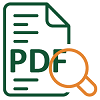The system of calculating advance tax payments two times , i.e. according to the rules applicable in 2021 as well as under the provisions introduced by the so-called “Polish Deal” has been transferred from the Ordinance of the Minister of Finance to the PIT Act. There has also been a change in the rules for submitting the PIT-2 form. All of these changes were provided for in the Act of February 14, 2022, amending the Law on Personal Income Tax, the Law on Vocational and Social Rehabilitation and Employment of Persons with Disabilities and the Law on Tax on Extraction of Certain Minerals (Journal of Laws of 2022, item 558), which is effective as of March 10, 2022.
Who is affected by the new advance tax payment calculating system?
As a result of the amendment, the text of the Ordinance of the Minister of Finance of 7 January 2022 on monthly advances for income tax was moved to the PIT Act.
The provisions that were carried over into the Act provide for a system of calculating tax advances two times. These regulations extended the deadlines for withholding and remitting a portion of advance personal income tax payments by remitters that are workplaces and principals in the case of taxpayers earning taxable income through those remitters from
- function-based relationship
- employment relationship
- home-based work or cooperative work relationship
- social security cash benefits paid by workplaces
- payments for participation in the balance sheet surplus in worker cooperatives.
When does the advance need to be recalculated under the new rules?
The new regulations apply if the monthly income earned by a taxpayer through a remitter does not exceed PLN 12,800. That limit applies separately for each of the four sources of income listed in the Act. Such sources for which the limit is set separately are:
- function-based relationship, employment relationship, home-based work or cooperative work relationship, social security cash benefits paid by workplaces, and, in the case of worker cooperatives – payments for participation in the balance sheet surplus in worker cooperatives;
- contracts of mandate;
- retirement and disability pensions, pre-retirement benefits and pre-retirement allowances, teacher’s compensation benefit, structural pension, social pension and parental supplementary benefit;
- social security cash benefits.
What are the changes in calculating the tax advance?
The regulations introduced a mechanism to extend the collection of that part of the advance that is the difference between the advance calculated under the 2021 rules and that calculated under the new rules effective January 2022, when the advance calculated under the 2022 rules is higher than that calculated under the old rules. This means that for remuneration paid this year it is necessary to calculate the tax advance twice, in two different ways: according to the old rules and according to the principles of the Polish Deal.
How to calculate PIT advance payments in 2022?
A tax advance calculated under the 2021 rules is the advance calculated by the remitter, taking into account the following:
- tax deductible expenses (unless the taxpayer has opted out by submitting a request to the remitter),
- social security contributions in the part financed by the taxpayer,
- the 2021 tax scale (with rates being 17% and 32%, with an income threshold of PLN 85,528 and 1/12 of the tax reducing amount of PLN 43.76, provided the remitter is entitled to deduct it at the moment of calculating the advance payment),
- tax-deductible health insurance contribution (7.75% of the tax base)
It is important to remember that the remitter applied a tax-reducing amount of PLN 43.76 in previous years provided that the employee’s income (from the beginning of the year) did not exceed PLN 85,528. This rule should also be taken into account when calculating the advance payment under the old rules this year.
A tax advance in accordance with the Polish Deal is the tax advance calculated under the rules applicable in 2022, i.e., where the remitter takes the following into account:
- tax deductible expenses (unless the taxpayer has opted out by submitting a request to the remitter),
- tax reliefs (e.g., social security contributions in the portion financed by the taxpayer, middle-class relief unless waived by the taxpayer) and exemptions (including: “4+ family tax relief”, “return relief”, or “senior citizen tax relief”, as long as the taxpayer has requested that the remitter applies them),
- the new 2022 tax scale (with rates being 17% and 32%, with an income threshold of PLN 120,000 and 1/12 of the tax reducing amount of PLN 425, provided the remitter is entitled to deduct it),
When calculating the tax advance payment under the new rules, the deduction of the health insurance contribution is no longer taken into account.
After calculating the tax advance in two ways, one should compare them. Next:
- if the advance under the Polish Deal exceeds the advance calculated under the old rules, a surplus arises, which is subject to deferment. In such a month, the remitter collects an advance payment calculated under the 2021 rules.
- if the advance payment under the Polish Deal is lower than the advance payment calculated on the basis of the old rules, the remitter collects an advance payment in the amount calculated on the basis of the rules from 2022 (and possibly the previously deferred part of the advance payment).
The deferral of the surplus takes place until the month in which the comparison of the amount of advance payments calculated in the two ways gives a negative difference, i.e. the advance payment under the Polish Deal is lower than the advance payment calculated according to the “old rules”. Then, the remitter:
- collects the advance payment under the Polish Deal from the taxpayer and the surplus from previous months, but not more than up to the amount of the advance payment calculated under the old rules (the advance payment cannot exceed that of 2021).
How to understand that this is a temporary deferral of advance collections?
The new regulations in the PIT Act, as well as the regulation preceding them, do not change the amount of advance payments for PIT. They only allow the collection of part of the advance to be postponed. That means that in the final settlement, the amount not collected by the remitter in a given month will have to be deducted from the remuneration, but at a slightly later date (in subsequent months, in which the advance paid according to the 2021 rules will be higher than the advance calculated in accordance with the provisions of the Polish Deal).
Who can opt out of the deferral of advance collections?
Following the amendment of the PIT Act, the list of taxpayers who may file resignation from the application of extended deadlines for advance income tax payments to the remitter has been expanded. As of March 10, such resignation may also be filed by taxpayers for whom the remitter includes the tax-free amount in advance tax payments. The resignation must still be in the form of a written request to the remitter not to extend the tax advance collection dates.
Until now, the resignation could only be filed by taxpayers where the tax remitter did not apply 1/12th of the tax reducing amount when collecting advance tax payments, such as contractors or persons receiving income from several employers or employees who did not submit the PIT-2 statement to the employer or “withdrew” it.
Who has the right to reduce the advance by 1/12 of the tax-free amount?
Pursuant to the new regulations, the remitter will reduce the advance payment by 1/12 of the tax reducing amount (i.e. by PLN 425) also when the PIT-2 statement is filed during the tax year. Previously, this was only possible if the declaration was filed before the first payment of remuneration in a given tax year.
A PIT-2 statement can now also be filed by a pensioner who applies to the pension authority not to apply the tax-free amount.
PIT-2 statements filed on the previously used forms will remain in effect. This means that taxpayers will not have to file the PIT-2 again.
Should you have any questions regarding calculating your monthly income tax advances or changes in the PIT-2 filing rules, please contact our experts.
 Iga Kwaśny
Iga Kwaśny
Partner, Accounting & Payroll Outsourcing
 Anna Scharf
Anna Scharf
Senior Manager, Accounting & Payroll Outsourcing



